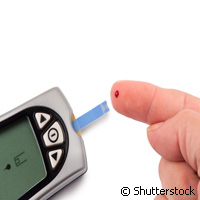Health problems triggered when fat cells reach limit
The fat cells of the obese appear to have a limit in the amount of fat they can store, according to new, partly EU-funded research. Once the limit has been reached, a number of biological processes are triggered which stop the further expansion of fatty tissue and may cause some of the health problems associated with obesity such as type 2 diabetes and cardiovascular disease. The study is published in the International Journal of Obesity and received EU support through a Marie Curie grant and the HEPADIP ('Hepatic and adipose tissue and functions in the metabolic syndrome') project, which was funded under the 'Life sciences, genomics and biotechnology for health' Thematic area of the Sixth Framework Programme (FP6). The findings may help explain why some obese people develop diabetes, cardiovascular disease and cancer, but others do not. 'What we still do not fully understand, is how the expansion of fat tissue is regulated in healthy people and how this process of regulation might be different in those obese people who have health problems such as the metabolic syndrome,' explained Dr Jaswinder Sethi of the Institute of Metabolic Sciences at the UK's University of Cambridge. Some scientists believe that storing excess fat does not lead directly to metabolic syndrome; rather there is a limit to how much fat can be stored safely before the body responds in a way that triggers the many health problems often associated with obesity. It turns out that a protein called secreted frizzled-related protein 1 (SFRP1), which is produced by fat cells, is key to the process. As the volume of fat cells and tissues rises, so does the level of SFRP1. According to the team, there is evidence that SFRP1 helps promote the expansion of fatty tissue. However, SFRP1 levels do not keep rising forever, but peak when the individual is mildly obese. In fact, SFRP1 levels gradually tail off in the morbidly obese. The researchers speculate that SFRP1 may work together with other molecules to respond to the availability of energy; if there is surplus energy, these molecules determine how far our fat tissue can expand. Declining levels of SFRP1 may be behind the metabolic problems faced by the obese. Notably, the fatty tissue of obese people with diabetes shows a decline in SFRP1 levels. 'SFRP1 seems to be very closely linked to some sort of tipping point, after which the way in which our fat tissue is regulated changes significantly and there are knock-on consequences to our wider metabolism,' commented Dr Sethi. 'We think that in very obese people this may be an early event that triggers metabolic syndrome and the chronic health problems associated with it, such as diabetes and cardiovascular disease.' Understanding these complex metabolic pathways could eventually contribute to the development of treatments for metabolic diseases associated with obesity. As the researchers point out, obesity levels are rising despite efforts to promote lifestyle changes that lower the chances of putting on excess weight. These new findings could have 'potential therapeutic use in the treatment of obesity-associated metabolic complications,' the researchers conclude. The team arrived at their findings after carrying out human gene profiling and mouse genetics studies to find out what is happening as fat cells and tissues develop. Additional funding for the research came from the UK's Biotechnology and Biological Sciences Research Council (BBSRC) and Medical Research Council (MRC). Also participating in the study were scientists in Spain and Finland.
Countries
Spain, Finland, United Kingdom



